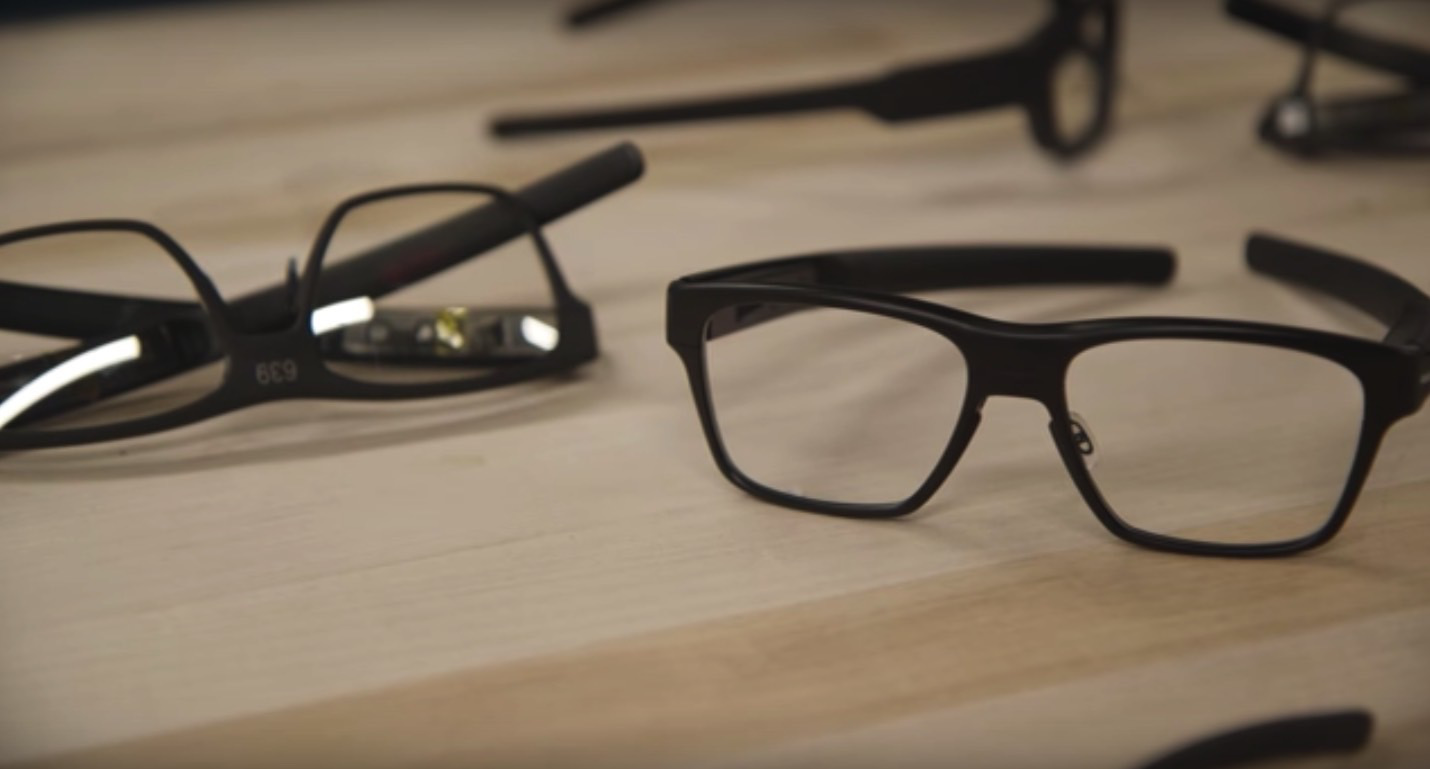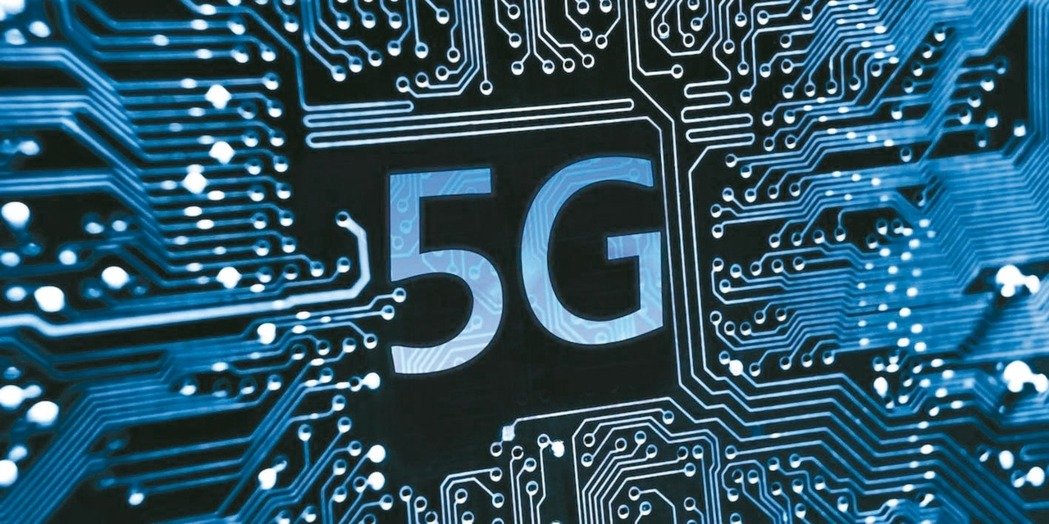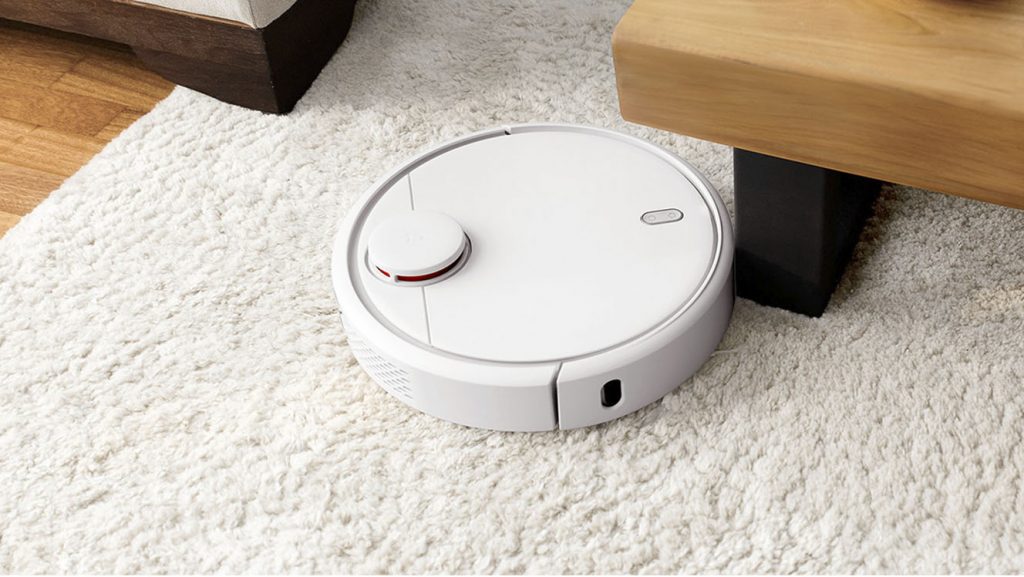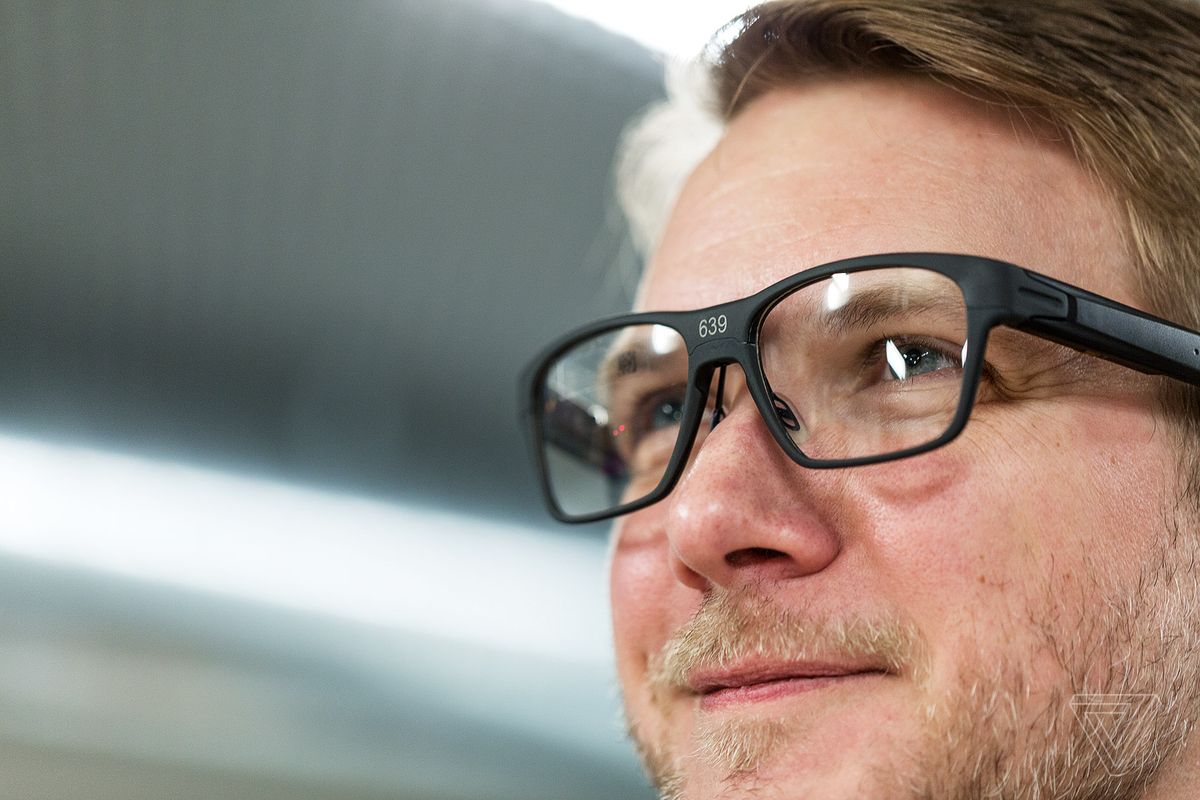


Intel Is Cancelling Its Vaunt Smart Glasses
In April, Intel has announced its plans to shut down the New Devices Group (NDG), which marks the end of its Vaunt smart glasses, which the company demonstrated in February.The Vaunt smart glasses were part of Intel’s broader effort to diversify its product offering and expand to other markets. The New Devices Group (NDG), which was formed in 2013 to make fitness trackers and smart glasses, was hit with a major layoff in 2016. Back then, Intel denied that the company was stepping back from wearables, but Intel’s struggle to gain a foothold in the wearables market was evident.
Now, after an investment of several hundred million dollars by Intel, the company is no longer denying that its foray into the wearables market hasn’t panned out as expected.
“Intel is continuously working on new technologies and experiences. Not all of these develop into a product we choose to take to market. The Superlight [an internal name for Vaunt] project is a great example where Intel developed truly differentiated, consumer augmented reality glasses. We are going to take a disciplined approach as we keep inventing and exploring new technologies, which will sometimes require tough choices when market dynamics don’t support further investment,” an Intel spokesperson told CNBC in an email.
The end of the Vaunt smart glasses isn’t exactly a surprise. “Intel has a reputation for showing off ideas that never turn into real products. It comes up with a cool concept, proves out the technology, then hopes to convince others to take that idea and turn it into a real product,” wrote Verge executive editor Dieter Bohn in February.
Intel’s intention with the Vaunt smart glasses was to make them as discreet as possible. In a sense, they were supposed to be the answer to the tsunami of privacy worries that had swept the industry after the launch of the Google Glass. Even from a close distance, the Vaunt smart glasses looked just like any regular pair of prescription glasses with a plastic frame: no visible display, no chunky battery, no touch controls, and, most importantly, no camera.
Instead, the Vaunt smart glasses featured a vertical-cavity surface-emitting laser (VCSEL), which is a semiconductor-based laser diode that emits a highly efficient optical beam vertically from its top surface. Intel used this very low-power laser to project a red, monochrome image with a resolution of 400 x 150 pixels onto a holographic reflector, which then reflected it directly onto the retina.
“We use a holographic grading embedded into the lens to reflect the correct wavelengths back to your eye. The image is called retinal projection, so the image is actually ‘painted’ into the back of your retina,” said Jerry Bautista, the lead for the team building wearable devices at Intel’s NDG. “We had to integrate very, very power-efficient light sources, MEMS devices for actually painting an image.”
Thanks to their innovative display technology and discreet looks, the Vaunt smart glasses were in a good position to become the first commercially successful smart glasses, and Intel even had a solid vision how to sell them to consumers.
”There’s something on the order of 2.5 billion people that require corrective lenses,” said Jerry Bautista. “They get their glasses from somewhere. Sixty percent of them come from eye care providers. … We would say these glasses belong in those kinds of channels. People are going to buy them like they buy their glasses today.”
Clearly, that plan didn’t pan out as intended, and Intel isn’t the only company in wearables that’s struggling to meet its goals. The wearable market would have actually shrunken in the fourth quarter of this year if it weren’t for Apple, whose shipments grew by 58 percent to 8 million devices, up from 5.1 million a year earlier, according to research firm International Data Corp. Fitbit’s shipments declined by 17 percent to 5.4 million in the quarter, and Xiaomi’s shipments fell by 5 percent to 4.9 million in the same quarter.
Despite the current state of the wearables market, the global wearables sales revenue is still projected to exceed 40 billion by 2021, compared to a little over 30 billion in 2018. According to a report in the FT, Amazon is working on building a pair of smart glasses to house its Alexa voice assistant, Google is focusing on helping professionals in manufacturing, logistics, and healthcare be more productive with its Glass Enterprise Edition, and Microsoft has demonstrated a number of real-world applications of its HoloLens headset. HoloLens however still carries a large price tag per unit and is painful to wear for over an hour which creates a barrier for industrial / enterprise applications.
It seems then that Intel’s failure simply indicates that smart glasses are not yet ready to leave the confines of factories, offices, and our homes. “The field of view, the quality of the display itself, it’s not there yet. We [Apple] don’t give a rat’s about being first. We want to be the best, and give people a great experience. But now anything you would see on the market any time soon would not be something any of us would be satisfied with. Nor do I think the vast majority of people would be satisfied,” said Apple’s CEO Tim Cook last year.
Focusing too much on the technology, this is something that Intel failed to see until the company could no longer afford to ignore the reality. Unfortunately, it appears we are still a few years out from that killer HUD that marries consumer price points, wearability, and functionality.

The Future is 5G
The very first mobile telephone call was made in 1973 by a senior engineer working for Motorola. A lot has changed since then, and we now use mobile phones for a lot more than making phones. In fact, mobile phones no longer even have a monopoly on mobile communication.Today, we rely on a number of different cellular- and internet-connected devices (Internet of Things – IoT) to stay productive, and we’re rapidly moving toward a connected future where nearly every electronic device wirelessly sends and receives information to offer various smart features / insights.
As our needs and personal electronic devices change, the infrastructure we rely on needs to change as well. A new generation of cellular technology is introduced to the world approximately every 10 years, with the current generation, 4G, having been first commercially deployed in 2009. The time is right for the next generation of cellular technology to come and replace 4G, and we already know what it will offer.
BLUF:
1. Horsepower – How does 10Gbps – 20Gbps sound? That is 100x faster than LTE and 10x faster than the fastest home internet connection today from a fiber provider like Verizon FiOS. Conservative estimates show expected latency to be 1/4th of LTE at 5ms from 20ms.
2. No Cables Required – Cable companies are in trouble and will be scrambling to have a cellular presence, which can be seen with Comcast Xfinity Mobile. If you live in a major metropolitan market and are building a new home in 2019+, forget about installing coax cable.
3. Telco Data Dwarfs Google’s – If a majority of phone, home entertainment, and IoT device internet access is funneled through 5G networks, the wireless providers of 5G will have more data access than any single technology vendor such as Facebook, Google or Apple.
4. 2020 – target for most major markets, rural areas should not hold their breath as the infrastructure priorities will continue to be major metro regions initially.
What Is 5G?
The chances are that you’ve already heard of 5G. Major carriers including Verizon, AT&T, and Sprint are testing 5G in cities around the country, and chipmakers like Qualcomm and Intel are working hard developing 5G hardware to bring the fifth generation of cellular networking to consumers worldwide.But despite all the buzz around 5G, there’s actually no official “5G” yet. Instead, there are several definitions of 5G, each of which includes slightly different specifications.
Arguably the most common definition of 5G is the 3GPP Release 15. 3GPP is the 3rd Generation Partnership Project, a collaboration between groups of telecommunications standards association. Apart from the 3GPP Release 15, there’s also the more rigorous ITU IMT-2020 definition from the International Telecommunication Union, a specialized agency of the United Nations that is responsible for issues that concern information and communication technologies.
“If anyone tells you they know the details of what 5G will deliver, walk the other way,” noted former FCC chairman Tom Wheeler. “Our proposal is the final piece in the spectrum trifecta of low-band, mid-band and high-band airwaves that will open up unprecedented amounts of spectrum, speed the rollout of new-generation wireless networks and redefine network connectivity for years to come. I’m confident these actions will lead to a cornucopia of unanticipated innovative uses and generate 10s of billions of dollars in economic activity.”
Even though hardware manufacturers, regulatory bodies, and governments have yet to paint a clear picture of what 5G is, we already have a pretty clear idea about what some of its most important components will be. But before we take a closer look at them, it’s helpful to first walk through the evolution of cellular technology and consider how each impacted the mobile landscape.
How We Got Here?
1G
The first generation of mobile networks was introduced in the 1980s and allowed for wireless voice calls. This was the time of the Motorola DynaTAC series of cellular telephones, which took around 10 hours to charge, lasted only for 30 minutes of talk, and featured a tiny LED display that consumed as much battery power as entire smartphones do today. During the reign of 1G, the only people that could afford mobile phones were one-percenters as the Motorola DynaTAC, and many other phones, cost thousands of dollars.2G
With the introduction of 2G, mobile networks shifted from fully analog systems to digital ones. 2G networks were commercially launched on the GSM standard in 1991 and offered encryption, much higher signal penetration, and data services for mobile, including SMS and MMS. Cellular data was enabled by GPRS, which offers a theoretical maximum transfer speed of 50 Kbps, and EDGE, which offers a theoretical maximum transfer speed of 1 Mbps.3G
The third generation of wireless mobile telecommunications technology offered even faster data rate than 2G, which allowed it to find application in wireless voice telephony, mobile Internet access, fixed wireless Internet access, video calls, and mobile TV. It was based on the IMT-2000 standards and first made available in Japan in 1998. By June 2007, which is when the first iPhone was released, the 200 millionth 3G subscriber had been connected to the network.4G
The requirements for the 4G standard were specified by the International Telecommunications Union-Radio communications sector (ITU-R) in March 2008, and it offered maximum data transfer speeds of 1 Gbps for low mobility communication, such as pedestrians and stationary users. However, most mobile users hadn’t been able to enjoy truly fast data transfer speeds until the arrival of 3GPP Long Term Evolution (LTE) technology and the launch of LTE services by carriers many years later. Even today, there are entire regions where 4G coverage is non-existent, and it’s highly likely that the rollout of 5G will follow a similar pattern.Features of 5G Networks
The members of ITU have agreed on 5G performance requirements for 5G, calling for a minimum of 20 Gbps downlink and 10 Gbps uplink per mobile base stations. “The IMT-2020 standard is set to be the global communication network for the coming decades and is on track to be in place by 2020. The next step is to agree on what will be the detailed specifications for IMT-2020, a standard that will underpin the next generations of mobile broadband and IoT connectivity,” said François Rancy, Director of ITU’s Radiocommunication Bureau. ITU’s draft report also specifies extremely low latency of 5 ms, which is a significant improvement compared to 4G LTE’s 20 ms. High data transfers speeds and low latency are essential not only for mobile content consumption but also for emerging applications such as driverless cars. Beyond these foundational improvements, 5G also includes a suite of new technologies, including small cells, millimeter waves, massive MIMO, and beamforming, just to name those that are most likely to make it to consumers.Small Cells
5G relies on high frequencies with low wavelengths that have difficulty penetrating solid objects. To ensure strong signal in densely populated areas, carriers will deploy many portable miniature base stations that require minimal power to operate to form a dense network that acts as a relay team. “This radically different network structure should provide more targeted and efficient use of spectrum. Having more stations means the frequencies that one station uses to connect with devices in one area can be reused by another station in a different area to serve another customer. There is a problem, though—the sheer number of small cells required to build a 5G network may make it hard to set up in rural areas,” explains IEEE Spectrum.Millimeter Waves
If you’ve ever tried to set up a WiFi network in a large apartment building, you probably know how crammed the WiFi frequency spectrum is. The situation is similarly grim in the radio frequency spectrum, which is why 5G is experimenting with broadcasting on millimeter waves. Millimeter waves are broadcast at frequencies between 30 and 300 gigahertz, allowing for massive amounts of data to be transmitted without any interference issues. But millimeter waves have one huge drawback: they can’t easily travel through obstacles. That’s why they’re a good fit for massive MIMO.Massive MIMO
Base stations today support only up to eight transmitters and four receivers. 5G cell towers of the future will support about a hundred ports, increasing the capacity of mobile networks by a factor of 22 or greater. The name of this technology is massive MIMO, and it’s the next evolutionary step from MIMO (multiple-input and multiple-output), a method for multiplying the capacity of a radio link using multiple transmit and receive antennas to exploit multipath propagation.Beamforming
According to IEEE Spectrum, “Beamforming can help massive MIMO arrays make more efficient use of the spectrum around them.” This technology can be found in today’s high-end Wi-Fi routers, and it identifies the most efficient data-delivery route to a particular user, allowing engineers to achieve the high throughput and low latency required for 5G even when there are obstacles in the way.When is 5G coming?
5G technology debuted at the Pyeongchang Winter Olympics, where it was used by Samsung and Intel to stream live VR coverage of sporting events. As exciting as such early demonstration of the next-gen mobile technology may be, regular mobile users will have to wait at least a few more years before they’ll be able to enjoy 5G connectivity. Intel, Qualcomm, and Samsung have all announced chipsets with 5G support, but carriers will set the pace of 5G adoption. Densely populated metropolitan areas will be covered first, while rural places may have to get by with 4G or even 3G for several more years.Conclusion
“These next-generation networks and standards will need to solve a more complex challenge of combining communications and computing together. With 5G, we’ll see computing capabilities getting fused with communications everywhere, so trillions of things like wearable devices don’t have to worry about computing power because network can do any processing needed,” Keddy told Quartz in an interview ahead of the 2017 Mobile World Congress. The next-generation mobile technology is taking shape, promising to support billions of connected devices. From smart cities to driverless cars to augmented and virtual reality to the internet of things, 5G use cases are numerous and its impact on the world as we know it will be profound. Author’s note: This is not a sponsored post. This article expresses my own opinions not those of my company. I am not, nor is my company, receiving compensation for it.
Xiaomi Looks to Conquer the IoT Market
Seven years since the launch of Xiaomi’s first smartphone in August 2011, the Chinese electronics and software company headquartered in Beijing is now expected to become the biggest public listing the world has ever seen, with a valuation of at least $50 billion in IPO.
Xiaomi is among the top five brands in China—alongside Huawei, Apple, Vivo, and Oppo—and it’s also the second largest smartphone seller in the subcontinent, after Samsung. Its market share in India, which has recently overtaken the United States to become the world’s second-largest smartphone market in the world after China, has grown by over 290 percentbetween Q3 2016 and Q3 2017. According to market researcher IDC, the surge can be attributed to Xiaomi’s brick-and-mortar expansion as well as its partnerships with major retailers.
